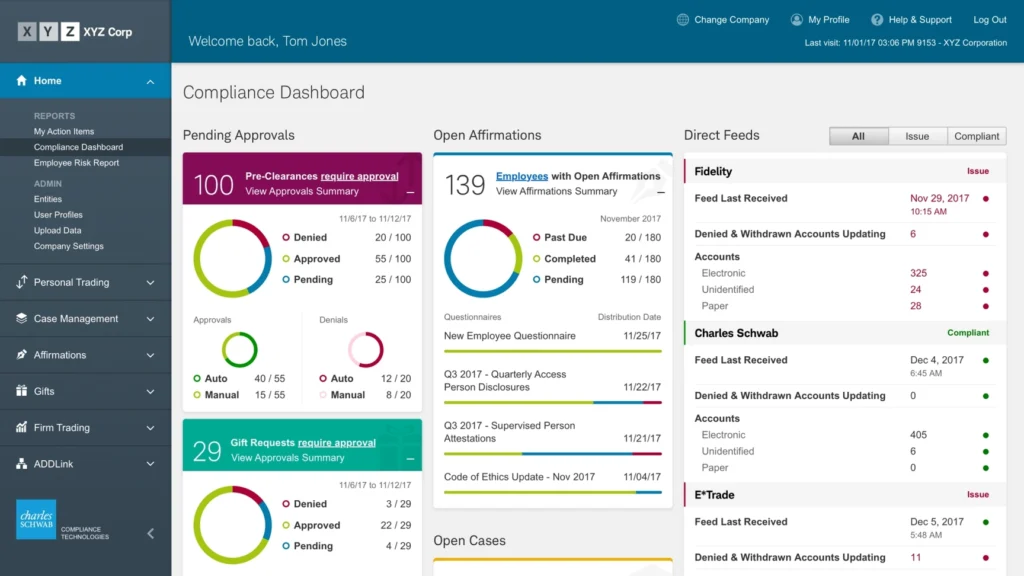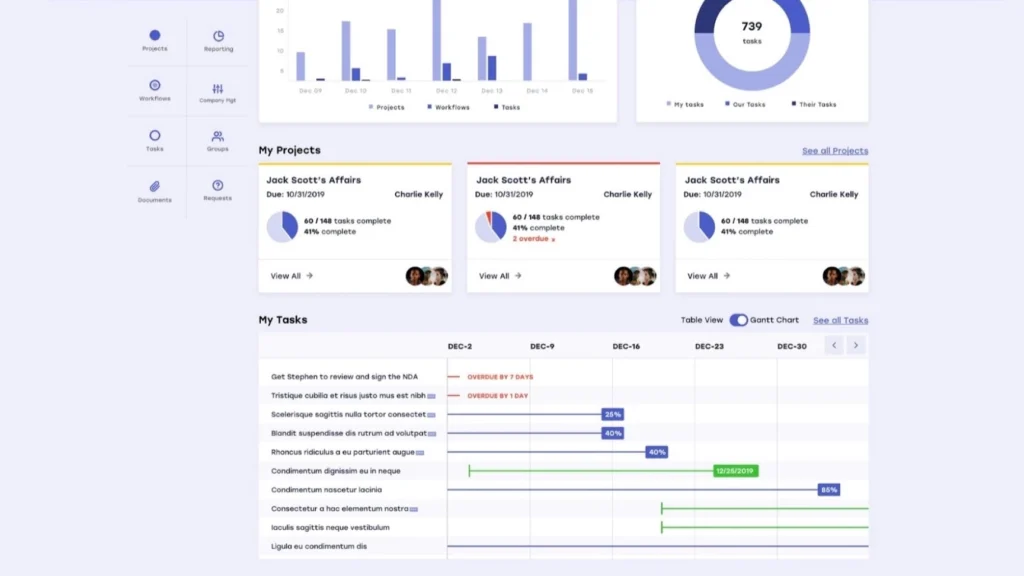Legacy application modernization: 6 signs of an outdated business system
Jan 27, 2024 20–24 min read

Discover the signs of outdated legacy systems and how application modernization services can enhance your business efficiency, security, and user experience.
Some vintage products are undeniably cool—and valuable. If a guitar player had a 1952 Fender Telecaster, it would be the pride and joy of their collection. Any auto enthusiast would love to have a 1962 Shelby Cobra. But when it comes to software, vintage status is decidedly a liability. An outdated business system can slow down your entire company, robbing employees of productivity and negatively impacting profitability.
That’s why so many businesses today are looking at legacy application modernization. If outdated systems slow you down, modern apps have the potential to revolutionize your whole approach to business. Even though company leaders and their tech teams know this to be true, many don’t prioritize application modernization. The main reason why is that change is difficult. Accounting and payroll teams shiver at the thought of replacing or upgrading the legacy applications they depend on. R&D labs typically have older PCs attached to proprietary hardware, and IT departments are wary of major system overhauls.
On top of this, it isn’t always clear when or why it’s time to ditch legacy software. If an existing application is getting the job done, is it worth the time and expense of application modernization? To answer this question, evaluate whether the app is really doing the job. Look for the signs that an older business system has become outdated. With that in mind, here’s what you need to know about legacy applications and six signs of an outdated business system.
Even though the terms “legacy system” and “legacy applications” are often mentioned, what they mean is not always clear. After all, not every existing application is outdated, and some still offer value. Gartner’s glossary defines a legacy application or system as “an information system that may be based on outdated technology but is critical to day-to-day operations.”
That’s a solid definition because it gets to the heart of the matter: legacy systems may be outdated, but they stick around because an essential business process relies on them. So, what exactly is legacy application modernization? At a high level, it’s simply the process of upgrading or outright replacing older systems. The specifics of how this is accomplished will vary from company to company, the legacy apps in question, and the options available.
For instance, modernizing applications can be relatively straightforward if upgrades to existing software are available. This often takes the form of cloud modernization or migrating from an on-premise application to a newer cloud-based version. However, upgrades often aren’t available for a legacy app. Custom apps built by an in-house software development team years ago might require a significant modernization effort to move to a cloud platform like Microsoft Azure.
No matter the application modernization strategy, businesses of all types and sizes should consider it. Modern technology offers improved agility, scalability, and interoperability. Meanwhile, legacy apps are typically security risks since they weren’t built with today’s threats in mind. Legacy applications can also be challenging to navigate, making for a poor user experience. The move to a cloud platform typically comes with user-friendly apps that sport new features and simplified interfaces.
Looking at the bottom line, the costs of maintaining and supporting legacy apps can add up over time. This becomes especially apparent when supporting apps that require outdated proprietary hardware since replacement parts become scarce and expensive.
For these and other reasons, legacy modernization becomes more critical every day. Rather than saving your company money, a lack of investment in app modernization can cost you a lot. As you consider a modernization effort, you should be on the lookout for the tell-tale signs of outdated legacy applications. Here are six of the top indicators to watch for:
You know the routine: an older app takes forever to start up, is slow to perform its basic tasks, and crashes when pushed. This is a sure sign the app needs to be updated.
With the massive computing power available today, there’s no reason to wait minutes for essential business functions to complete or waste time on reboots and app re-launching. Add up this lost time on any given day and multiply that out to 260 working days per year for a genuinely frightening lost time statistic.
Modern applications can be prone to slowness and crashes, but software updates typically resolve these issues. Patch management systems are a staple of IT departments worldwide now, so bug fixes and security updates are delivered on time. If the updates are available, that is.
If the vendor no longer ships updates for your legacy app, that clearly indicates it’s outdated. Even worse, the app may be so old that the vendor no longer offers technical support. And it’s disturbingly common that outdated applications are kept running even when the vendor no longer exists, having gone out of business years earlier. Beyond the hit to productivity, a lack of updates also has negative implications for the security of your network and corporate data.
One of the top benefits of cloud computing is flexibility. With the best cloud apps, you can work from a desk—in the office or anywhere else—or use a mobile app to access key functions and business data while on the go. Applications built before the advent of smartphones and mobile apps will never have this functionality. And in this day and age, that’s a glaring sign of an outdated business system.
It’s not just about mobile apps, either. It’s about data and how easily it can be shared across apps. It’s about collecting and using that data to create new functionality. This is the end result of digital transformation, wherein all critical business processes revolve around data-rich digital systems. The old monolithic application model—which most outdated legacy apps were developed under—doesn’t offer this level of data interoperability. This ultimately creates bottlenecks in process flows, slowing down the speed of business.
If the only option you have for a particular app or business system is to host it on-premise, there’s already a high likelihood that it needs to be updated. This goes without saying, given the prevalence of the cloud in the enterprise space today. Beyond the negative implications for your digital transformation efforts and data interoperability, there’s the high cost of maintaining on-premise systems.
The significant cost savings of cloud computing bear this out. Add up the costs of hardware, server licenses, database apps, and the storage they require, along with the network resources and labor costs to keep everything running. Now, compare what the same functionality will cost you on a cloud platform. Online tools like the Microsoft Azure Total Cost of Ownership (TCO) Calculator can help you crunch these numbers and see that a permanently on-premise app will cost you significant money.
The problems of on-premise hardware are compounded by legacy applications, especially those with proprietary hardware requirements. It’s all too common for outdated apps to have equally vintage hardware requirements, relying on obsolete PCI cards and long-abandoned peripherals. When critical business processes rely on ancient hardware, you’re left scouring the used market or overseas vendors to find replacement parts.
Far from being just a hardware problem, you can also get burned by vintage software requirements. Take, for instance, a finance app that needs Adobe Flash to display its charts and graphs. While the Flash Player was once ubiquitous, modern and interoperable solutions have usurped its place in the software world. And that’s just one example of reliance on outdated software dependencies that can cause major hassles when problems arise.
Not all legacy systems come from outside vendors. Many enterprise apps were built by internal software development teams to meet specific business needs. These custom solutions typically meet those needs early on, but their functionality becomes frozen over time. For several reasons, it gets to be too cost-prohibitive to update these apps up to modern standards.
It could be that the apps were coded in a language that’s no longer in wide use, or they might run on equally obsolete application servers. Then there’s the problem of undocumented code that current developers can’t make heads or tails of. Whatever the cause of the problem, legacy code often equals costly and troublesome maintenance, a sure sign of an outdated app.
You’re probably familiar with at least one of the above six signs of outdated legacy systems. You may even have various apps that allow you to check off all six scenarios. Still, these legacy apps persist. That’s often because the challenges of legacy modernization can seem daunting. See if some of these top challenges sound familiar to you:
However, you can still build an excellent application modernization strategy by following some best practices, including:
As with many business functions today, artificial intelligence is also impacting the world of legacy modernization. AI’s advantages in preparing and executing a modernization strategy are rapidly making it a new best practice. AI can analyze all of your existing systems, helping you better identify the legacy applications. When it comes to old custom app codes, AI tools can help with conversions to the latest coding standards and application designs.
AI is also essential for testing modernization scenarios. This can help you avoid some of the most common modernization problems and ensure smooth upgrades and updates. Soon, AI may even handle the bulk of modernizing applications by analyzing code and writing new apps built on the microservices model, while phasing out monolithic applications.
You don’t have to wait for AI to gain new functionality to get started on modernizing your legacy apps. Hiring a well-regarded consulting service can provide your organization with a world-class application modernization strategy and help make it a reality.
Here at Codal, we have a deep understanding of multiple modernization approaches. Combined with our technical know-how and expert guidance, the most trying modernization and integration challenges become more manageable. The results are faster modernizations and a reduced risk to your organization. To see what we mean, have a look at how we helped two high-profile customers through digital transformation and application modernization:

Codal’s partnership with Charles Schwab, a leader in the banking, investing, and wealth management spaces, shows the urgency with which legacy application modernization is sometimes needed. Not only did Charles Schwab have many internal web applications that needed modernization, but the company also needed to revamp its internal compliance solution, SchwabCT, with a user-focused, data-driven approach. This was a matter of improving internal business processes and a critical customer-facing application.
Clients used the SchwabCT tool to automate the time-consuming tasks related to monitoring employee trading activity. The legacy app and its platform were slow and cumbersome, with more than 550 separate screens for users to navigate through. The Codal team went through a rigorous discovery process to identify modernization opportunities.
Ultimately, Codal transformed both SchwabCT and the internal applications into intuitive and aesthetically pleasing web applications. At the same time, we revamped the platform’s architecture, consolidating all those screens into a mere seven templates. Now, the modernized tool helps organizations grow by streamlining financial compliance and workflow automation.

Many corporate legal departments, in-house counsel, and outside firms turn to Proxy to help them manage tasks, deadlines, and important legal documents. Proxy is the result of a partnership between Codal and NMBL Technologies. NMBL came to Codal with a minimum viable product (MVP) for Proxy, but they needed to transform it into a modern, enterprise-grade solution that stands up to the complexities of legal project management.
Codal’s engineering team worked on an Agile timeline alongside NMBL designers, QA analysts, and the Proxy development team to deliver a top-notch legal workflow solution. Importantly, Proxy offers the flexibility that enterprises need from modern apps, including a cloud-based SaaS solution. Since NMBL partnered with Coda in 2018, Proxy has become one of the top project management solutions in the burgeoning legal tech space.
No matter what your application modernization needs are, they are uniquely your own. Just as every company and its app stack is unique, so are your modernization goals. When you’ve seen the signs of outdated business systems, you know it’s time to seriously consider modernization. You need a partner that understands your specific needs, one that’s experienced in all forms of application modernization. And that’s where Codal can step in and help.
Codal is a full-stack enterprise design and development consultancy specializing in digital transformation and modernization.

Explore our latest expertise on innovation, design, and technology, or connect with us directly to see how we can help accelerate your digital transformation.